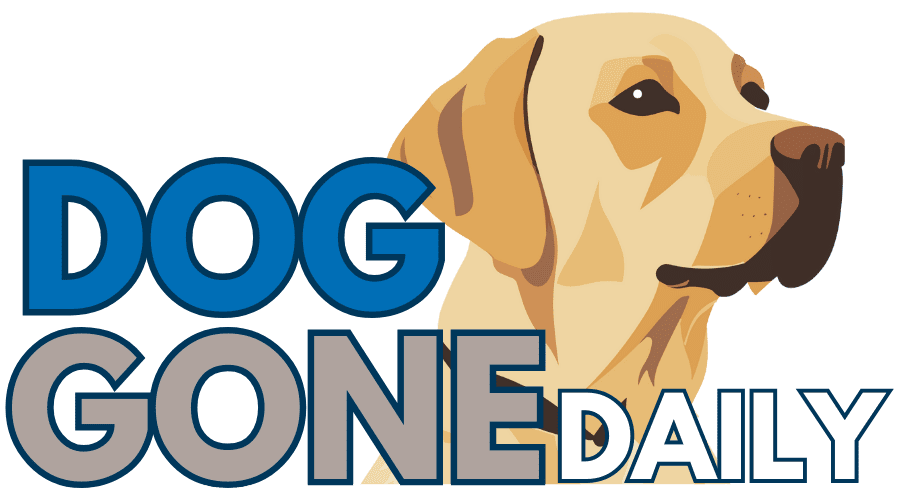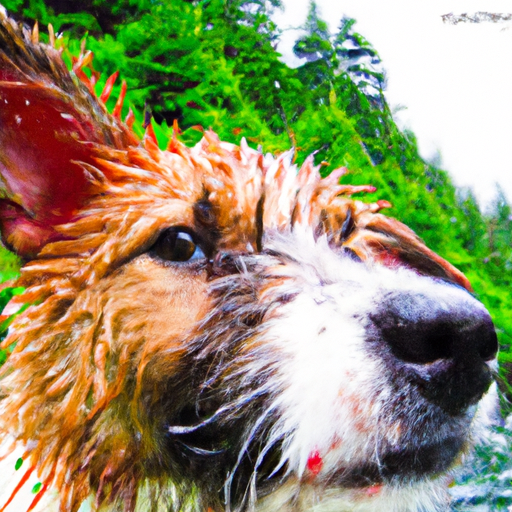Are you looking to take your dog's training to the next level? If you've mastered the basic obedience commands and are wondering if it's time to challenge your canine companion with more advanced training techniques, you're not alone. Many dog owners reach a point where they want to push their four-legged friend's skills further and explore the possibilities of more advanced obedience training. In this article, we will explore the benefits and considerations of embarking on this exciting journey, helping you determine whether it is indeed time to start more advanced obedience training for your furry friend.
Benefits of Advanced Obedience Training
Improved Focus and Attention
Advanced obedience training goes beyond basic commands and teaches your dog to focus and pay attention even in distracting environments. By practicing exercises that require your dog to ignore distractions and remain focused on you, you can improve their ability to concentrate and follow instructions.
Increased Mental Stimulation
Engaging in advanced obedience training provides mental stimulation for your dog. It challenges them to learn new commands, problem-solve, and think critically. This mental exercise can tire them out just as much as physical exercise, keeping their minds sharp and preventing boredom.
Enhanced Problem Solving Skills
Through advanced obedience training, your dog learns to problem-solve and think independently. They are taught to analyze situations and find the best solution to overcome challenges. This helps them become more adaptable and quick-thinking in various situations, which can be beneficial both in day-to-day life and in specialized tasks.
Challenges of Advanced Obedience Training
Time Commitment
Advanced obedience training requires a significant time commitment. To see progress, you need to dedicate regular training sessions and consistently practice with your dog. This can be challenging for busy individuals or those with limited time.
Need for Professional Guidance
While basic obedience training can often be done independently, advanced obedience training may require professional guidance. In some cases, it is necessary to work with a professional dog trainer who specializes in advanced training techniques. Their expertise and experience can help ensure that you and your dog are on the right track and making progress.
Potential Frustration
Advanced obedience training can be more challenging and frustrating than basic training. It involves teaching complex commands and behaviors, which can take time for your dog to fully understand and execute. It's important to remain patient and persistent, as frustration can hinder progress and lead to setbacks.
When is the Right Time to Start Advanced Obedience Training?
Basic Obedience Mastery
Before diving into advanced obedience training, it is crucial for your dog to have a solid foundation in basic obedience. They should have a good understanding of commands such as sit, stay, come, and leave it. Once your dog has mastered these basic skills, they are ready to move on to more advanced training.
Dog's Age and Developmental Stage
The right time to start advanced obedience training can vary depending on your dog's age and developmental stage. Generally, it is recommended to start advanced training when your dog is at least one year old and has finished their initial puppy training. However, every dog is unique, and some may be ready for advanced training sooner or may require more time to mature mentally and physically.
Availability of Time and Resources
Advanced obedience training requires a commitment of time and resources. Assess your own schedule and availability to ensure that you can dedicate the necessary time for training. Additionally, consider if you have access to the resources, such as training facilities or professional trainers, that can support your dog's advanced training needs.
Advanced Obedience Techniques and Exercises
Off-Leash Training
An important aspect of advanced obedience training is teaching your dog to respond to commands without the use of a leash. Off-leash training requires building a strong bond and trust with your dog, as well as reinforcing their reliability in following commands even without physical boundaries. This skill provides freedom and flexibility during outings and ensures that your dog remains well-behaved even when not physically restrained.
Advanced Commands and Behaviors
Advanced obedience training introduces new commands and behaviors that go beyond the basics. These can include commands like heel, retrieve, and even more complex behaviors like crawling or playing dead. By expanding your dog's repertoire of commands, you can further enhance their level of obedience and the range of activities you can enjoy together.
Distraction Training
In advanced obedience training, your dog is exposed to various distractions to create real-life scenarios that require them to maintain focus and disregard the distractions. This can include introducing other animals, loud noises, or enticing smells during training sessions. By practicing in distracting environments, your dog becomes more resilient and better equipped to listen and follow your commands regardless of external stimuli.
Choosing the Right Training Approach
Positive Reinforcement
Positive reinforcement is a widely recognized and effective training approach that involves rewarding your dog for desired behaviors. This approach focuses on encouraging and reinforcing good behavior rather than punishing unwanted behavior. By utilizing rewards such as treats, praise, or playtime, positive reinforcement creates a positive association with training and motivates your dog to continue learning and obeying commands.
Clicker Training
Clicker training is a specific method of positive reinforcement training that uses a handheld clicker to mark desired behaviors. The sound of the clicker is followed by a reward, which helps your dog associate the sound with positive reinforcement. Clicker training can be particularly useful for teaching precise commands and shaping complex behaviors.
Balanced Training Methods
Balanced training methods involve a combination of positive reinforcement and correction-based techniques. This approach focuses on setting clear boundaries and expectations for your dog, using rewards for desired behaviors and appropriate corrections for undesired behaviors. Balanced training methods aim to provide a balanced approach to training, taking into consideration the individual needs and temperament of each dog.
Utilizing Technology in Advanced Obedience Training
Training Apps and Online Resources
Technology has made advanced obedience training more accessible with the availability of training apps and online resources. These tools provide step-by-step guides, training videos, and interactive exercises that can supplement your in-person training sessions. Training apps and online resources can be especially helpful for practicing commands and behaviors outside of structured training sessions.
Electronic Training Collars
Electronic training collars, also known as e-collars or shock collars, can be utilized in advanced obedience training. These collars have adjustable stimulation levels and can be used to provide feedback and reinforcement to your dog remotely. It is important to use electronic training collars responsibly and under the guidance of a professional trainer to ensure their safe and effective use.
Remote Training Devices
Remote training devices, such as remote-controlled treat dispensers or sound-emitting devices, can be incorporated into advanced obedience training. These devices allow you to provide immediate reinforcement or distractions during training sessions, even from a distance. They can be particularly useful for practicing off-leash training or for addressing specific unwanted behaviors.
The Importance of Consistency and Persistence
Establishing Clear Rules and Boundaries
Consistency is key when it comes to training a dog. Establish clear rules and boundaries early on and ensure that all members of the household are on the same page. Consistent expectations and reinforcement help your dog understand what is expected of them and reduce confusion or inconsistency in their training.
Regular Training Sessions
Regular training sessions are essential for advanced obedience training. Aim for consistency by scheduling dedicated training sessions throughout the week. These sessions can be as short as 10-15 minutes but should be focused and structured. With regular practice, your dog will develop muscle memory and become more proficient in executing commands.
Continuous Reinforcement
Even after your dog has mastered advanced obedience skills, it is important to continue reinforcing their training. Reinforcement can come in the form of rewards, verbal praise, or occasional refresher training sessions. By consistently reinforcing their training, you help ensure that your dog retains their skills and remains well-behaved in various situations.
Monitoring Progress and Adjusting Training Strategies
Assessing Skill Levels
Regularly assess your dog's skill levels and progress to determine if any adjustments to your training strategies are necessary. This can be done by observing their performance during training sessions or seeking professional evaluations. Adjustments may involve tweaking training techniques, increasing the difficulty of exercises, or focusing on specific areas for improvement.
Modifying Training Goals
As your dog progresses in advanced obedience training, it may be necessary to modify training goals. This can involve setting new challenges, introducing more complex commands, or working towards specific tasks or certifications. Modifying training goals not only provides new challenges for your dog but also keeps training sessions exciting and engaging.
Seeking Professional Feedback
Professional feedback is invaluable when it comes to advanced obedience training. A professional trainer can assess your dog's progress, address any training issues, and provide guidance tailored to your dog's specific needs. Seeking professional feedback ensures that you are on the right path and helps you make the necessary adjustments for successful advanced training.
Advanced Obedience Training for Specific Purposes
Service Dog Training
Advanced obedience training is essential for service dogs. These highly trained dogs assist individuals with disabilities and perform specific tasks to aid their handlers. Service dogs undergo rigorous training to learn specialized skills, such as opening doors, retrieving items, or alerting to medical conditions. Advanced obedience training is crucial for service dogs to reliably perform their duties and adhere to their handler's commands.
Therapy Dog Training
Therapy dogs provide comfort, emotional support, and companionship to individuals in various settings, such as hospitals, nursing homes, or schools. Advanced obedience training is necessary for therapy dogs to be well-behaved and adaptable in different environments. They are trained not only to follow commands but also to interact gently and calmly with people of all ages and medical conditions.
Competitive Dog Sports
For those interested in participating in competitive dog sports, advanced obedience training is a must. Sports like agility, obedience trials, and rally obedience require dogs to perform advanced commands and navigate through complex courses. These sports showcase the dog's obedience, athleticism, and teamwork with their handler. Advanced obedience training is essential to excel in these competitive arenas.
Conclusion
Advanced obedience training offers numerous benefits for both you and your dog. It improves focus and attention, provides mental stimulation, and enhances problem-solving skills. However, it also comes with challenges such as time commitment and potential frustration. The right time to start advanced training depends on your dog's mastery of basic obedience, age and developmental stage, and your availability of time and resources.
There are various advanced obedience techniques and exercises to explore, including off-leash training, advanced commands and behaviors, and distraction training. Choosing the right training approach, such as positive reinforcement, clicker training, or balanced methods, is crucial for effective training. Technology can also be utilized, with training apps, electronic training collars, and remote training devices offering additional support.
Consistency and persistence play a vital role in advanced obedience training. Establishing clear rules and boundaries, scheduling regular training sessions, and providing continuous reinforcement are key factors in achieving success. Monitoring progress, modifying training goals, and seeking professional feedback are essential for continued improvement.
Advanced obedience training can cater to specific purposes, such as service dog training, therapy dog training, and participation in competitive dog sports. Each requires additional specialized training to meet specific requirements and perform specialized tasks.
In conclusion, while advanced obedience training may present challenges, the benefits outweigh them. By choosing the right approach and dedicating time and effort to training, you can embark on a fulfilling journey to a better-behaved dog and strengthen the bond between you and your furry companion.






